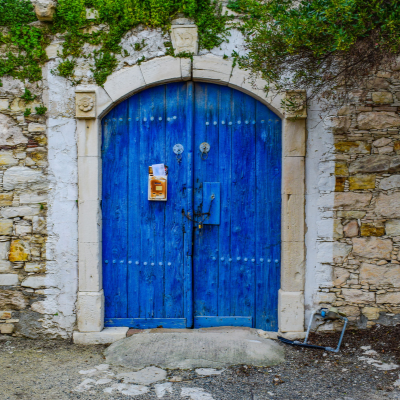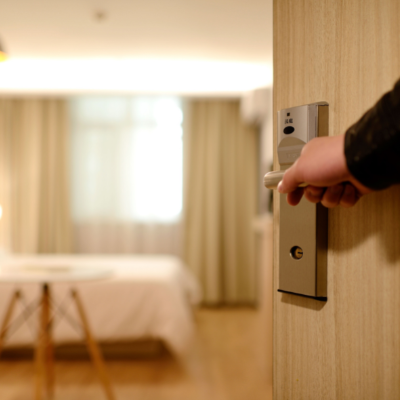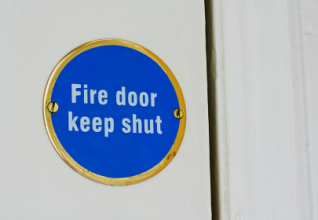
Doors
They come in every style, colour, and different materials. But no matter what the style, colour, or material they all serve the same purposes right…well not quite! But we will get into that in a second. First a quick history lesson on doors…
Did you know over 4000 yrs ago images of doors were found in ancient Egyptian paintings?
(Source sburiek, 2019).
It is claimed that a door represented a gate to the afterlife. The Romans created articulate doors made of bronze. Around the reign of the emperor of China between 604- 618 AD doors contained bronze cutouts and copper trim. (Source History of Architecture, 2022).
Fast forward to the c12th and c13th and doors were made of solid oak. Then during the c16th and c17th doors Spanish renaissance doors often contained hand-forged nails.
Michelangelo described them as “gates to paradise.” (Source Sburiek, 2019).
More than a status symbol
Although doors started as symbolic and were often seen as status symbols, nowadays they have a whole host of uses. It doesn’t matter if it folds, slides or swings, their uses are still the same. They close openings to provide privacy, keep us safe, keep us away from the elements and allow us to divide spaces between rooms. But that’s not all they do, they can keep us alive.
How can a simple door protect us from harm…well fire doors do just that, (along with their frames). In keeping with the theme of the blog, here’s a short history lesson about fire doors.

History of fire doors
Unlike the blue door pictured here, the first modern fire-rated door was steel, patented in 1903 by Charles Dahlstrom. Fire doors and shutters were common in the industry and tall buildings to prevent the spread of fire and loss of property by, along with suitable construction, separating a building into fire compartments to limit the spread of fire.
In 1951 the first British Standard for wooden fire doors was published, and by this time, the use of suitable structures and doors to protect escape routes for the safety of occupiers had been established.
Older fire doors using 25mm stop proved to be adequate at restricting heat and flame, but less so hot gases, smoke, and toxic fumes, and the introduction of intumescent strips (which swell when heated to fill the gaps around the door) and smoke seals (to stop the flow of both cold and hot smoke, gas and fumes) in the latter part of the 20th century vastly enhanced their effectiveness.
It’s now common to refer to a fire door set rather than a fire door as not only the door leaf or leaves but also the door frame, essential hardware, edge seals and glazing, and any integral side panels or fanlight panels in an associated door screen, must be of the right materials, installed correctly and compatible with each other in order for the door to perform correctly. The use of fire door sets is for a 3-fold purpose:
To maintain the integrity of means of escape in the event of a fire - By stopping smoke and toxic gases from entering stairways, corridors, etc
- To isolate areas within a building that represent a significant fire risk - By stopping heat and flame from entering or leaving them
- To provide access through compartment walls - Whilst still maintaining compartmentation to limit the spread and effect of fire in a building
- Correctly sited (via a Fire Risk Assessment ideally via third-party accredited specialists) and maintained (ideally via third-party accredited contractors) fire door sets are a major part of the preservation of life and property in a premise
Fire doors
Fire doors have an FD rating, which means how long they can withstand fire. For example, an FD60 door will offer protection from fire for 60 mins. However, no matter the rating, if they are not fit for purpose or propped open, they will offer no protection in effect, as useful as a chocolate teapot, (like the blue one pictured).
The use of fire door sets is for a 3-fold purpose:
1. To maintain the integrity of means of escape in the event of a fire - By stopping smoke and toxic gases from entering stairways, corridors, etc
2. To isolate areas within a building that represent a significant fire risk - By stopping heat and flame from entering or leaving them
3. To provide access through compartment walls - Whilst still maintaining compartmentation to limit the spread and effect of fire in a building
Correctly sited (via a Fire Risk Assessment ideally via third-party accredited specialists) and maintained (ideally via third-party accredited contractors) fire door sets are a major part of the preservation of life and property in a premise.
Did you know that according to the Fire Protection Association (FPA), 76% of fire doors failed inspections in 2019?

Multi occupancy buildings
So that’s why all multi-occupancy buildings should have regular fire door safety inspections.
This is because, this gives building managers, owners, and tenants, peace of mind that the fire doors within their properties have been checked by a competent person and that any remedial actions needed to meet the requirements of BS476 have been highlighted.
The takeaway here is Fire doors save lives
They form a vital part of a building’s passive fire protection and are designed to stop the spread of fire and smoke for a specified amount of time, in order to:
- Protect escape routes, to enable safe evacuation of the building
- Protect the building and its contents, limiting costs and disruption after a fire
- Allow firefighters to extinguish the fire as safely as possible
Contact us
If you would like to talk to our trusted experts on anything to do with fire safety please do not hesitate to contact us at 02922 800 000 or enquiries@ligtas.co.uk
Did you know we also offer a whole array of free expert advice in the form of webinars and news articles? The links are below, or why not sign up for our newsletter for updates?
The Webinar for understanding fire doors can be viewed here.
The Webinar discussing the fire safety act can be viewed here.
We are the trusted health and safety experts who do more than just tick boxes


